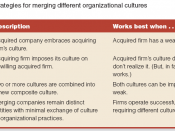LEARNING ISSUES
. What's "Organizational Change?"
Typically, the concept of organizational change is in regard to organization-wide change, as opposed to smaller changes such as adding a new person, modifying a program, etc. Examples of organization-wide change might include a change in mission, restructuring operations (e.g., restructuring to self-managed teams, layoffs, etc.), new technologies, mergers, major collaborations, "rightsizing", new programs such as Total Quality Management, re-engineering, etc. Some experts refer to organizational transformation. Often this term designates a fundamental and radical reorientation in the way the organization operates.
What Provokes "Organizational Change"?
Change should not be done for the sake of change -- it's a strategy to accomplish some overall goal. Usually organizational change is provoked by some major outside driving force, e.g., substantial cuts in funding, address major new markets/clients, need for dramatic increases in productivity/services, etc. Typically, organizations must undertake organization-wide change to evolve to a different level in their life cycle, e.g.,
going from a highly reactive, entrepreneurial organization to more stable and planned development. Transition to a new chief executive can provoke organization-wide change when his or her new and unique personality pervades the entire organization.
Why is Organization-Wide Change Difficult to Accomplish?
Typically there are strong resistances to change. People are afraid of the unknown. Many people think things are already just fine and don't understand the need for change. Many are inherently cynical about change, particularly from reading about the notion of "change" as if it's a mantra. Many doubt there are effective means to accomplish major organizational change. Often there are conflicting goals in the organization, e.g., to increase resources to accomplish the change yet concurrently cut costs to remain viable. Organization-wide change often goes against the very values held dear by members in the organization, that is, the change may go...



Loved it
Good point of view
4 out of 4 people found this comment useful.